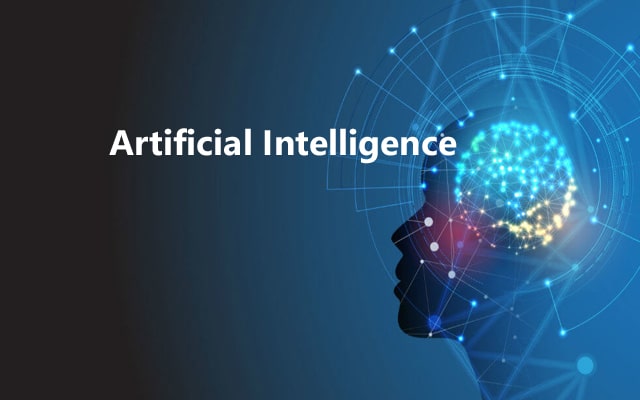What are the common mistakes that people are doing while using AI?

Artificial Intelligence is a collection of many different technologies that work together to enable machines to sense, understand, act, and learn with human-like intelligence. Perhaps that's why the definition of artificial intelligence seems to vary from person to person. There is more than one AI. Technologies involving machine learning and natural language processing are all part of the AI landscape. Each is evolving in its own way, and when combined with data, analytics and automation help organizations reach their goals, whether it's improving customer service or optimizing the supply chain.
Recent Using Artificial Intelligence
Artificial intelligence (AI) has become more popular in recent years, and companies in all industries, including manufacturing, are beginning to look for ways to apply artificial intelligence to their work. A common application of artificial intelligence in customer service. With natural language processing (NLP), AI chatbots can talk to customers online, analyze past interactions and customer data to make recommendations, answer questions, and guide users to the information they need. You can enroll in the Great Learning AI ML courses to gain more knowledge of these technologies.
However, organizations should be careful not to rush into AI without being aware of common pitfalls that can delay, limit, or even ruin AI initiatives. However, implementing AI can be difficult and can be costly to dispose of a failed project.
Look at some common errors to avoid for a successful AI customer experience:
Separate AI and human agents:
Many companies are unsuccessful in meeting their goals because they are separating AI from other customer service departments. Chatbots don't always know how to help customers with a particular problem. This scenario requires a method to transfer the interaction to the human agent. Without an escalation strategy, you run the risk of frustrating your customers and losing your business. You can also prepare for success by allowing the information collected by the chatbot to be forwarded to a human representative when needed. This allows the customers the chance for unnecessary repetitions.
Customer service team change:
The first thing you need to know about customer service chatbots and other forms of AI is that they are not a replacement for human workers. The AI can interact directly with the customer and resolve the customer's problems, but may not be able to understand the more complex complaints and inquiries. In addition, real customer service personnel offer something that AI can't.
It's a connection with humans. Their customer service team helps build relationships with customers and answer their questions. When giving an overview of your AI strategy, plan to maintain your customer service team. Do not use AI instead of living support. Instead, think of artificial intelligence as a tool to support your team.
Insufficient resource allocation:
Developing true artificial intelligence takes time and resources. Without sufficient investment in the project, the final product may not deliver the required performance. You can get your AI project off to a good start by hiring an in-house data scientist who has the knowledge to train your bot on what's happening with your customers.
Adopt just because you think you should:
All new technologies are coming with a wave of companies trying to be relevant to the times. However, you shouldn't implement AI customer service tools just because everyone else has them. Think about why you use artificial intelligence. If you have an easier solution to your problem, try it first to save time and money.
Unrealistic expectation:
Regardless of marketing and embassies absorbed by science fiction, many people have an unrealistic idea about what artificial intelligence can be achieved. AI customer service tools are powerful but can not solve all issues that can be available to companies and customers.
It is recommended to advance their research to keep disappointment at bay and make sure that the AI solution you consider achieves your goals. to advance their research, and make sure that the AI solution you consider actually achieves your goals.
Assuming AI is a panacea:
Too many companies think AI is a panacea for all problems. As a result, many of them mistakenly jump to generalized technology trends without thinking about it. We recommend the opposite approach. Focus on the specific purpose of AI. Try to address a specific issue. Then decide if you can use a standard solution or if you really need a custom solution.
Implementing AI for its own purpose:
AI is a technology similar to any other technology. Many projects fail because companies want to implement "buzzy" technology and use it as a starting point. A more effective way to get started with an AI initiative is to have a very clear picture of the basic business problem you want to solve and then work in the opposite direction. Concentrate on a particular solution and use AI to do it.
Look for AI to fix what doesn't work:
AI is a good solution. Therefore, unless the process and strategy are at least good, AI solutions can cause more pain than profit. Old maxim proverbs in and proverbs out apply. Remember that AI is an accelerator. So if your process is unstable and you are using good AI, you are running more junk and faster.
AI is just an advanced form of automation, and like any other automation, automation causes havoc only if you don't understand the input and can't manage it effectively manually. You can enroll for the best artificial intelligence course online to gain more knowledge in AI and to avoid common mistakes.
Conclusion
Approach AI in the same way that you approach other technology decisions.
- Clarify what you are trying to resolve.
- Define the tasks to perform and the critical success factors.
- Review alternatives to determine the best way to complete a task.
- Determines the best technology (or AI).
Good customer support helps the manufacturing industry retain and attract new customers. When implemented carefully, artificial intelligence helps customer service teams work more efficiently and deliver better results. AI isn't just about futuristic human-like robots. Most AI applications today are in a small AI area. They are powerful, but not very attractive. You don't have to spend money to integrate AI into your business. It is certainly possible to integrate AI. You don't need vast coding knowledge to use AI. You can start building your custom AI model today.







